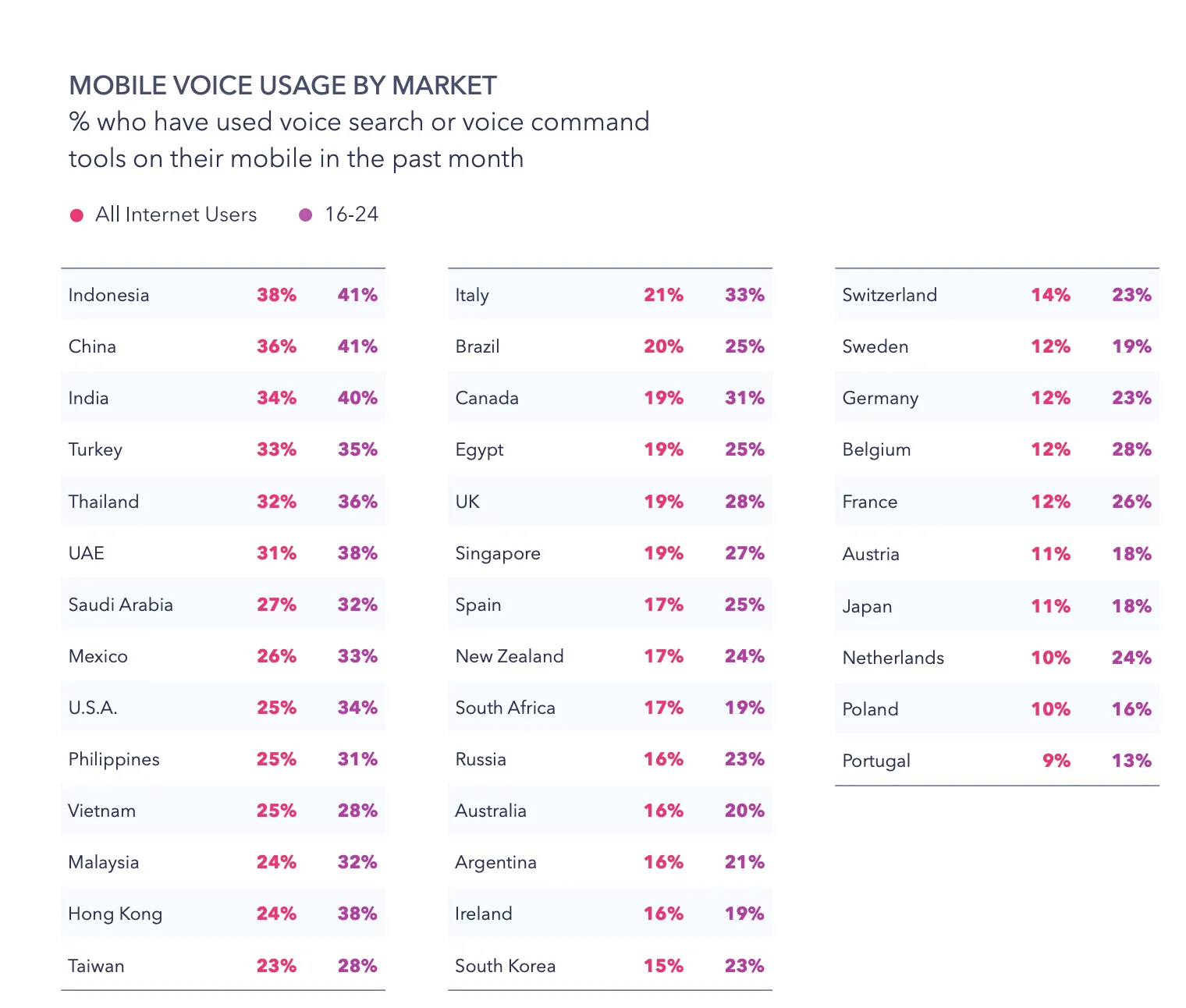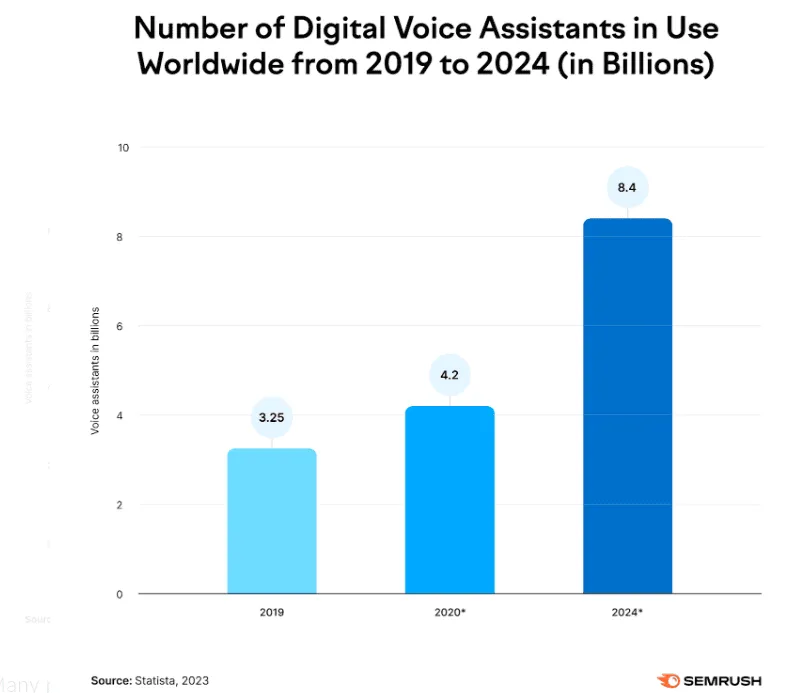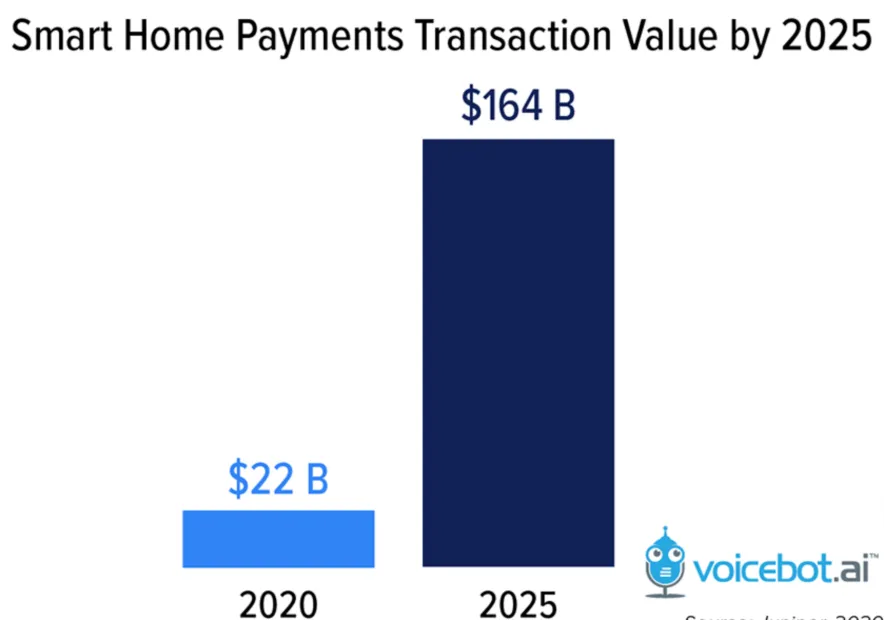Voice search is rapidly transforming how users interact with technology and access information online. It’s no longer a novelty but a mainstream behavior, with billions of voice command interactions occurring monthly. Fueled by the proliferation of smartphones and smart speakers, and advancements in Artificial Intelligence, understanding the trajectory of voice search is crucial. Approximately 20% of the global population already utilizes voice search capabilities, supported by an estimated 8.4 billion active voice assistants. For businesses and marketers, staying informed about key voice search statistics is vital for optimizing strategies and meeting evolving consumer expectations. This article delves into the essential data, exploring adoption rates, user demographics, the voice assistant market, SEO implications, e-commerce trends, and future predictions shaping the voice-first era.
Global Voice Search Adoption and Growth
The adoption of voice search continues its upward trend globally. Here’s a look at the current landscape and how usage has evolved:
- In the first half of 2024, approximately 20.5% of global internet users utilized voice search commands, showing a slight increase from 20.3% in the previous quarter (Data Reportal).
- Mobile devices are a key driver, with about 27% of the global online population using voice search on their smartphones (Think With Google).
- Usage Growth Over Time:
- 2019: The number of digital voice assistants in use worldwide stood at 3.25 billion.
- 2020: This figure saw a significant jump to 4.2 billion devices.
- 2022: Voice search usage peaked in early 2022 at 22.5% of internet users, followed by minor fluctuations, generally stabilizing between 19% and 20%.
- 2023: The United States saw 146 million voice assistant users, a slight increase year-over-year.
- 2024: Projections estimate 149.8 million voice assistant users in the U.S., continuing the gradual growth trend.
(Source: GWI Report)
Understanding Voice Search User Demographics and Behavior
Who is using voice search, and how? Understanding the demographics and context provides valuable insights:
- Age Groups: Younger generations lead adoption. Millennials (18-34) are prominent users, with 77% utilizing voice search on their phones (GWI Report). Furthermore, 33% of this age group use voice assistants daily, compared to 28% of users aged 35-54 (eMarketer). Other age groups also show significant usage: 55.2% of Gen Z, 51.9% of Gen X, and 31.5% of Baby Boomers report monthly usage (Huddle Creative).
- Geographic Distribution: Adoption varies globally. Countries like Indonesia (38%), China (36%), and India (34%) demonstrate significantly higher mobile voice search usage than the global average (GWI). The Asia-Pacific region generally shows higher adoption (60% of internet users) compared to North America (45%) and Europe (40%) (Global Web Index). Usage is also higher in urban areas (68%) compared to rural regions (48%), likely due to technology access (PwC Consumer Insights). In the U.S., about 25% of internet users have employed voice search or commands on their phones (GWI).
 Bar chart showing voice search usage penetration by country, highlighting Indonesia, China, and India as leaders.
Bar chart showing voice search usage penetration by country, highlighting Indonesia, China, and India as leaders.
- Device Preference: Smartphones are the dominant device for voice interactions, preferred by 72% of users, compared to 35% who use smart speakers (Voicebot.ai).
- Usage Context: Convenience drives usage. Over 50% of smartphone users engage voice search daily for quick information like weather updates or directions (Perficient). A significant 65% use voice search while driving, leveraging its hands-free nature for directions and finding local places (PwC). Additionally, 63% of smart speaker owners use voice commands to control other smart home devices (Voicebot.ai).
The Expanding Voice Assistant Ecosystem
Voice assistants, the AI-powered software behind voice commands, are integral to this trend. They facilitate tasks like setting reminders, playing music, and answering questions.
As of 2024, the global number of active voice assistants reached approximately 8.4 billion devices. This staggering number highlights the ubiquity of voice technology across smartphones, smart speakers, vehicles, and other connected devices (Juniper Research). By the end of 2024, this number is projected to surpass the global population.
 Conceptual graphic illustrating various voice assistant applications across devices like smartphones, smart speakers, and cars.
Conceptual graphic illustrating various voice assistant applications across devices like smartphones, smart speakers, and cars.
Market Leaders and Trends
Several key players dominate the voice assistant market:
- Amazon Alexa: Launched in 2014 with Echo devices, Alexa holds a significant share, particularly in the smart speaker market (~27% globally, 66% of US smart speaker owners choose Echo) (Statista).
- Google Assistant: Introduced in 2016, it’s deeply integrated into Android devices and Google Nest speakers, holding around 23% of the global smart speaker market share (Statista).
- Apple Siri: As the pioneer major smartphone voice assistant (launched 2011), Siri maintains dominance within the Apple ecosystem (iPhones, iPads, Macs).
- Others: Microsoft Cortana and Samsung Bixby currently have lower global adoption rates.
Voice Assistant User Base
The number of people regularly interacting with voice assistants is substantial and growing:
- Projections indicate that the number of U.S. voice assistant users will climb from 149.1 million in 2024 to 162.7 million by 2027 (eMarketer).
- Globally, 30% of internet users aged 16-64 use voice assistants weekly, indicating deep integration into daily routines (Backlinko).
- In the US and UK, 28% of people report using voice assistants daily, underscoring their increasing importance (Huddle Creative).
Optimizing for Voice Search: Key SEO Statistics
As voice search grows, optimizing content for voice queries becomes essential. Here are critical SEO statistics to consider:
- Top Results Dominate: In 8 out of 10 cases, over 80% of Google Assistant’s voice search answers are sourced from the top three organic search results (Search Engine Land). Content ranking well in desktop search often appears in voice results. (Backlinko)
- Speed is Crucial: Voice search result pages load significantly faster – 52% quicker than the average web page. Optimizing PageSpeed is vital for voice search visibility (Backlinko).
- Featured Snippets are Key: A substantial 40.7% of voice search answers are pulled directly from Google’s Featured Snippets. Aiming for position zero is a primary voice SEO tactic (Backlinko).
- Long-Form Content Performs Well: Google tends to favor comprehensive content for voice answers. The average word count of a voice search result page is around 2,312 words (Backlinko).
- User Perception Favors Voice: Users find voice search highly convenient. Research shows 90% find it easier, 89% more convenient, and 87% faster than typing (PwC).
- Security Matters: Secure websites are preferred, with 75% of voice search results coming from HTTPS-enabled sites (Keywords Everywhere).
The Rise of Voice Commerce (v-Commerce)
Voice search is significantly impacting purchasing behaviors and creating new opportunities in e-commerce.
How Voice is Shaping E-commerce
- A notable portion of consumers are already comfortable making purchases via voice, with 21% of US consumers having used voice assistants to complete a transaction (PYMNTS).
- Among owners of voice-enabled devices, 43% use them for online shopping tasks (Synup).
- Specifically for smart speaker owners, 25% have purchased goods or services online using voice commands (Synup).
 Line graph projecting the significant growth of smart home device payment transaction value via voice assistants through 2025.
Line graph projecting the significant growth of smart home device payment transaction value via voice assistants through 2025.
- Consumers frequently use voice for product research, with 71% preferring voice search to check prices (G2 Learning Hub).
- Popular voice shopping categories include home decor/appliances (76% of voice shoppers), toiletries/beauty (75%), home essentials (74%), clothing (67%), and pet supplies (68%) (Coupon Follow).
Impact on Retail and Marketing
Voice search is reshaping how consumers find and interact with businesses, especially local ones:
- Local search is heavily influenced by voice. 75% of smart speaker owners search for local businesses weekly using their devices, and 53% do so daily (Search Engine Journal).
- Finding dining options is a common use case, with 56% of people using voice assistants for this purpose (Small Biz Trends).
- While 82% of smartphone users use traditional search engines to find local shops, a significant 58% discover them via voice search (G2).
- The economic impact is substantial. Voice search-generated revenue is projected to near $40 billion by 2024 (G2).
- Looking ahead, the value of transactions made via voice assistants on smart home devices is expected to reach $164 billion by 2025 (VoiceBot).
The Future: AI Integration and Voice Search Evolution
The future of voice search is intrinsically linked with advancements in Artificial Intelligence (AI), promising more sophisticated and personalized interactions.
AI’s Role in Voice Technology
- Consumer preference continues to shift, with 71% favoring voice search over traditional typing methods as of 2024 (PwC study).
- The nature of voice queries is evolving, with an expected 20% increase in searches using specific qualifiers like ‘best,’ ‘easy,’ and ‘free’ (WebFX).
- The AI market itself is booming, projected to hit $900 billion globally by 2026, largely driven by generative AI, conversational AI, and voice technologies (Gartner).
- The global voice recognition market is forecast to reach $26.8 billion by 2025, reflecting the increasing demand for and capability of this technology (Globe News Wire).
- Accuracy is reaching near-human levels. Google’s voice recognition technology now achieves a 95% accuracy rate for English queries, though challenges remain with accents or rapid speech (Google AI Research).
- User expectations are high, with 63% believing AI, including voice assistants, will significantly improve their daily lives (McKinsey).
Voice Search Projections in Marketing and SEO
- By 2025, it’s anticipated that voice search will account for nearly half of all online searches, representing a major shift for digital marketing strategies (Semrush).
- Local optimization remains critical, as 58% of voice search users are specifically looking for local business information (BrightLocal).
- Voice commerce is set to expand further, with U.S. consumers projected to spend $40 billion via voice shopping by 2025 (OC&C Strategy Consultants).
Conclusion: Embracing the Voice-First Future in 2025
The statistics clearly indicate that voice search is not a fleeting trend but a fundamental evolution in human-computer interaction, profoundly impacting user behavior, SEO practices, and commerce. Driven by convenience, widespread device adoption, and continuous AI advancements, voice technology is becoming deeply integrated into daily life.
Businesses and marketers must recognize this shift and adapt their strategies accordingly. Optimizing for natural language queries, aiming for featured snippets, ensuring mobile-friendliness and page speed, and focusing on local SEO are no longer optional but necessary for visibility and engagement in the voice-first era. As voice commerce grows, integrating voice capabilities into the customer journey will unlock significant opportunities. Staying ahead requires understanding these trends and leveraging the right AI tools. Explore Sdigi AI Tools to find solutions that align with the evolving voice landscape.








